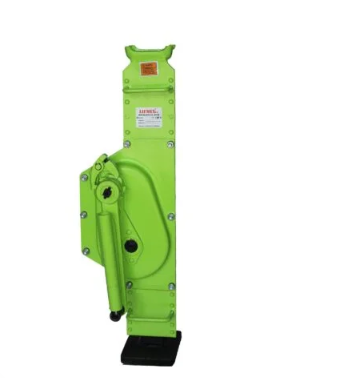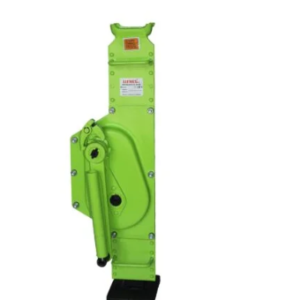If you’ve ever been stranded on the side of the road with a flat tire, you understand the vital role of a reliable lifting tool. A mechanical jack is an indispensable item for any car owner, offering the leverage needed to safely and efficiently lift heavy loads. This comprehensive guide will delve into everything you need to know about mechanical jacks, including their uses, benefits, and how to operate them effectively.
What is a Mechanical Jack?
A mechanical jack is a device designed to lift heavy loads by applying a force through a mechanical advantage. Unlike hydraulic jacks, which rely on fluid pressure, mechanical jacks typically use a screw mechanism or a ratchet system. This distinction makes them exceptionally durable and often more cost-effective. Whether you’re changing a tire or performing vehicle maintenance, a mechanical jack is a crucial tool to have on hand.
Types of Mechanical Jacks
Understanding the different types of mechanical jacks can help you choose the right one for your needs. Here are the most common types:
-
Scissor Jacks
- Description: Compact and portable, scissor jacks are ideal for emergency roadside situations.
- Operation: They work by turning a screw, which causes the scissor arms to expand and lift the vehicle.
- Usage: Best suited for small to medium-sized cars and light-duty lifting tasks.
-
Screw Jacks
- Description: These jacks use a threaded screw to raise and lower the load.
- Operation: Turning the screw clockwise lifts the load, while turning it counterclockwise lowers it.
- Usage: Suitable for heavier vehicles and more demanding lifting requirements due to their robust design.
-
Ratchet Jacks
- Description: Also known as farm jacks, these are versatile tools capable of lifting, pulling, or pushing heavy objects.
- Operation: They use a ratcheting mechanism that provides excellent lifting power with each pump of the handle.
- Usage: Ideal for off-road vehicles, farm equipment, and other heavy-duty applications.
Benefits of Using a Mechanical Jack
Choosing a mechanical jack over other types of jacks offers several advantages:
- Durability: Mechanical jacks are built to last. Their simple design means fewer parts can break or malfunction, ensuring longevity.
- Affordability: Typically, mechanical jacks are less expensive than hydraulic models, making them a budget-friendly option.
- Ease of Use: While they might require a bit more physical effort, mechanical jacks are straightforward to operate and maintain. This simplicity translates to fewer issues and easy troubleshooting.
How to Use a Mechanical Jack Safely
Safety is paramount when using a mechanical jack. Here’s a detailed step-by-step guide to ensure you use your jack correctly:
- Find a Level Surface: Always use the jack on a flat, stable surface to prevent it from tipping over. An uneven surface can cause the jack to become unstable, posing a serious safety risk.
- Engage the Parking Brake: Before lifting your vehicle, ensure the parking brake is engaged. This step is crucial to prevent the vehicle from rolling, which could lead to accidents or injuries.
- Position the Jack Correctly: Refer to your vehicle’s owner’s manual to locate the designated lifting points. Place the jack under the vehicle’s lifting point to avoid damage to the car and ensure stability.
- Operate the Jack: Slowly turn the handle or crank to raise the vehicle. Continue cranking until the tire is off the ground and you have enough clearance to perform your task. Always lift the vehicle high enough to safely remove and replace the tire.
- Perform the Necessary Task: Whether changing a tire or inspecting the undercarriage, ensure you work efficiently while the vehicle is lifted.
- Lower the Vehicle: Once you’re finished, carefully lower the vehicle by reversing the cranking process. Slowly turn the handle or crank counterclockwise until the vehicle is securely back on the ground. Double-check the vehicle’s stability before removing the jack.
Maintenance Tips for Your Mechanical Jack
To ensure your mechanical jack remains in top condition, follow these maintenance tips:
- Regular Inspections: Check for any signs of wear and tear, such as cracks, rust, or bent components.
- Lubrication: Keep the screw and moving parts well-lubricated to ensure smooth operation.
- Proper Storage: Store the jack in a dry place to prevent rust and corrosion. Keeping it in your vehicle’s trunk in a secure compartment can also protect it from damage.
- Clean After Use: Wipe down the jack after each use to remove dirt and debris that can affect its performance.
Conclusion
A mechanical jack is an invaluable tool for any vehicle owner. Its durability, affordability, and ease of use make it an excellent choice for both roadside emergencies and routine maintenance. By understanding the different types of mechanical jacks and following safe usage practices, you can ensure that you’re prepared for any situation that requires lifting your vehicle. So, the next time you hit the road, make sure you have a mechanical jack in your trunk – you never know when you might need it!

